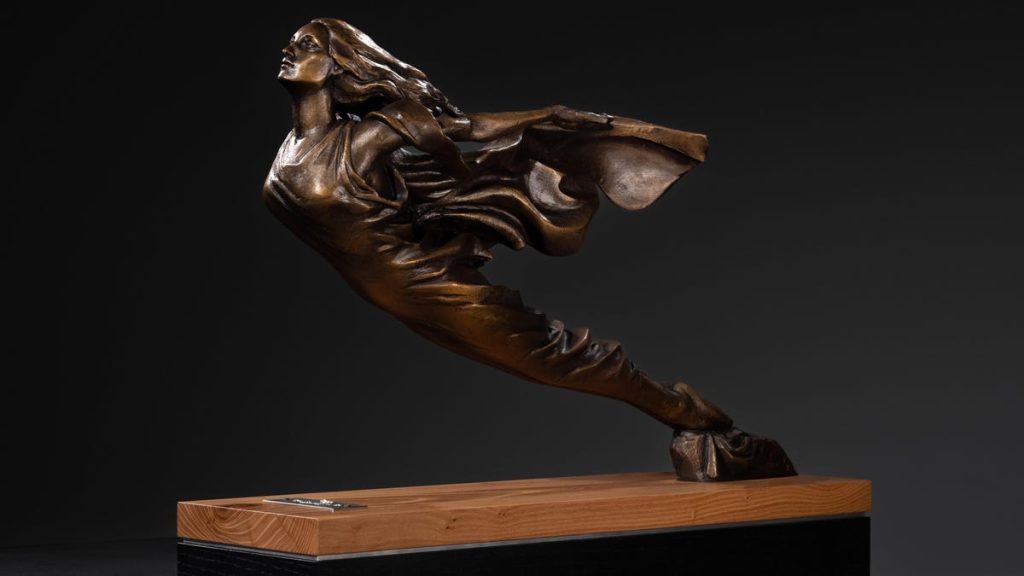The Cadillac Goddess Is Coming Back on the Celestiq

Photo: Cadillac
Hood ornaments are all but gone in modern cars, but decades ago automakers had a bit more taste, adorning their cars with evocative symbols of speed and beauty. Cadillac, for example, had its Goddess, shown above, from 1930 to 1956, which it recently said would come back (sort of) for its new all-electric Celestiq.
The Cadillac Goddess actually last appeared on some versions of the 1959 Eldorado Brougham. Sadly, the 21st-Century version won’t be a hood ornament, but instead will be found in three other places on the Celestiq. One is a badge on the front quarter panel:
Photo: Cadillac
Another is on the infotainment controller, with a rim that spins independently from the Goddess, meaning she’ll “always remain upright,” according to Cadillac.
Photo: Cadillac
Finally, Cadillac says that the Goddess will appear as a lit emblem near the Celestiq’s charging port once the car is fully charged, which is a nice touch.
Cadillac also shed a bit more light on the history of the Goddess, and history is the only part of automaker press releases worth reading:
The original Cadillac Goddess was designed by William N. Schnell of Ternstedt Manufacturing Company, a subsidiary of General Motors responsible for all GM brightwork, between 1928 and 1929. Upon inception, the original Goddess was touted as a work of art that embodied “the very spirit of unsurpassed swiftness and power, coupled with grace and perfect balance.”
The sculpture’s long, sweeping lines were also meant to convey “the modern beauty and fleetness,” of the brand, and was available on Cadillac’s V-8, V-12 and V-16 models.
The Goddess, however, didn’t become a fixture on Cadillac vehicles until 1933, when a new version was designed by Chris J. Klein and John R. Morgan, also of Ternstedt Manufacturing. Shortly after crafting the 1933 goddess, Klein took a leadership position with GM Design in the sculpting group.
The Goddess was initially available only on the Cadillac V-16, signaling the car’s power and prestige. It was adopted across the lineup in a revised form in 1934 for V-8 and V-12 models, but through the end of their production, the “Sixteens” carried an exclusive version, using the 1933 design through 1937 before moving to an updated design from 1938-40.
With the end of Cadillac V-12 and V-16 production, a new Goddess was adopted for all models in 1941. After World War II and throughout the 1950s, she evolved further and updated designs were reportedly inspired by the same aircraft influences that sparked tail fins and jet-engine design cues, under the direction of legendary GM Design Vice President Harley Earl.
The original era of the Goddess concluded in 1956, although she made another appearance on the limited-production 1959 Eldorado Brougham.
Cadillac says that the new Goddess is a different spin on the original, and was “sculpted entirely by hand” by a GM Design sculptor. The Goddess will also only appear on the Celestiq (for now), but I suspect that Cadillac would’ve made a bigger splash if it was actually bringing back the Goddess as a hood ornament, and not just a symbol in a few places. I mean, I realize the importance of aerodynamics in electric vehicles to maximize range and minimize power usage, but if we can’t have hood ornaments on cars that aren’t Rolls-Royces, really we’re just debasing ourselves.
Photo: Cadillac





